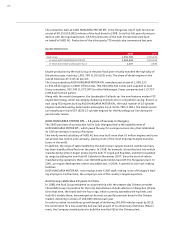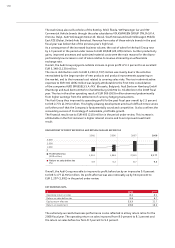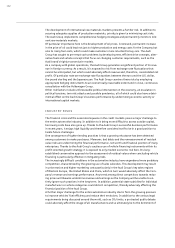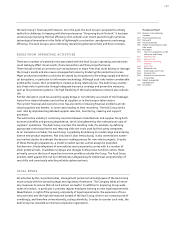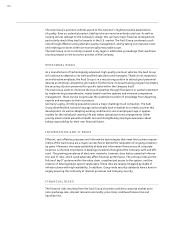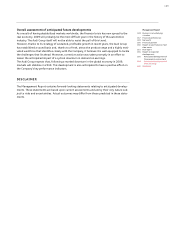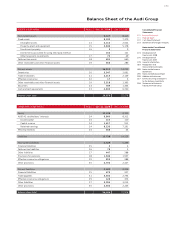Audi 2008 Annual Report Download - page 181
Download and view the complete annual report
Please find page 181 of the 2008 Audi annual report below. You can navigate through the pages in the report by either clicking on the pages listed below, or by using the keyword search tool below to find specific information within the annual report.
162
The development of international raw materials markets presents a further risk. In addition to
securing adequate supplies of production materials, priority is given to minimizing cost risks.
The Audi Group implements comprehensive hedging strategies and permanently monitors rele-
vant raw materials markets.
Of particular importance here is the development of oil prices. A renewed, permanent increase
in the price of oil could lead not just to higher production and energy costs for the Company but
also to rising fuel costs, which could make customers more reluctant to buy cars. The Audi
Group has sought to pre-empt such problems by developing new, efficient drive concepts, alter-
native fuels and vehicle concepts that focus on changing customer requirements, such as the
Audi brand’s highly economical e models.
As a company with global operations, the Audi Group generates a significant portion of its reve-
nue in foreign currency. As a result, it is exposed to risk from exchange rate fluctuations that
cannot be anticipated, but which could adversely affect revenue and, therefore, consolidated net
profit. Of particular note are exchange rate fluctuations between the euro and the U.S. dollar,
the pound sterling and the Japanese yen. The Audi Group counters these risks by employing
appropriate hedging instruments to an economically reasonable extent and in close, continuous
consultation with the Volkswagen Group.
Other risk factors include unforeseeable political intervention in the economy, an escalation in
political tensions, terrorist attacks and possible pandemics, all of which could also have a detri-
mental effect on the Audi Group’s business performance by undermining economic activity or
international capital markets.
INDUSTRY RISKS
The financial crisis and the associated squeeze in the credit markets poses a major challenge to
the entire automotive industry. In addition to it being more difficult to access outside capital,
borrowing costs have also gone up. Thanks to the Audi Group’s successful business performance
in recent years, it enjoys high liquidity and therefore considers itself to be in a good position to
tackle future challenges.
One consequence of tighter lending practices is that a growing reluctance has been detected
among customers to make purchases. Moreover, bad debts and the remeasurement of residual
value risks are undermining the financial performance, net worth and financial position of many
enterprises. Thanks to the Audi Group’s cautious use of vehicle financing instruments within its
profit-oriented growth strategy, it is exposed to only modest economic risk here. Its long-
established conservative approach to the assessment of residual values when concluding vehicle
financing is particularly effective in mitigating risks.
The increasingly difficult conditions in the automotive industry have engendered more predatory
competition, characterized by the growing use of sales subsidies. This development may result
in price erosion and higher marketing costs particularly in the Audi Group’s key sales regions
of Western Europe, the United States and China, which in turn would adversely affect the Com-
pany’s revenue and earnings performance. Any trend among direct competitors towards reduc-
ing prices will likewise undermine revenue and earnings as the Company will be unable to en-
tirely ignore such practices in the long term. In addition, potential state subsidies for individual
manufacturers or vehicle categories could distort competition, thereby adversely affecting the
financial position of the Audi Group.
A further major challenge for the entire automotive industry stems from the growing pressure
to improve vehicles’ fuel efficiency and reduce their emissions. In addition to the various legal
requirements being discussed around the world, such as CO2 limits, a protracted public debate
could adversely affect the image of all manufacturers and so ultimately be to the detriment of


